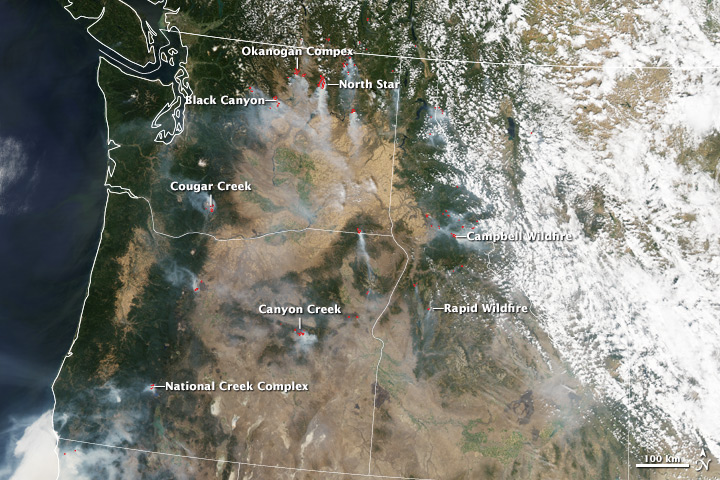The Western United States is now enduring numerous wildfires that are straining both resources and nerves.
While the fires are extensive—many are detectable from space at night—this year’s fire season is not necessarily worse than ones of the past 15 years, BuzzFeed reports. In general, the West has become warmer and drier because of climate change, leading to more severe fire seasons. In addition, over the past two decades, developers have increasingly built houses closer to forested land that naturally burns in the summer. That puts wildfires in the news—and dramatic photos on Instagram—more frequently.
In previous generations, forest managers like the U.S. Forest Service strove to put out every fire, no matter how small. In forests that naturally host periodic, small fires, that longtime lull in wildfires allowed for dry brush to build up, so that when fires did take off, they burned bigger and hotter than ever before. In recent years, as researchers have recognized the danger of overzealous fire suppression, fire managers have started burning small areas of forest in prescribed fires, meant to stave off less controllable, unintentional burning. Of course, unpremeditated fires still occur, as this recent news proves.

NASA gathers data from fires using its Suomi NPP satellite, which is equipped with an infrared sensor that’s able to detect the signal from large wildfires at night. During the daytime, of course, the fires are detectable in simple visible-light satellite photos by the large plumes of smoke they make.





